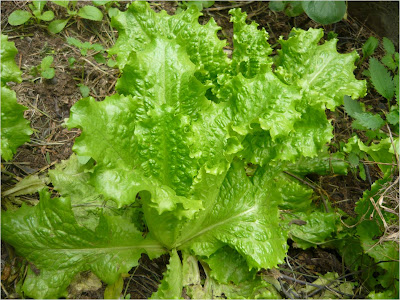The cultivation of the lettuce crop is perhaps the most
storied in humanity. It is believed that the Egyptians were the first to
cultivate more than 2500 years. Today, long time later it is still a favorite
crop because the lettuce is one of the foods used daily.
Although lettuce can be cooked, you usually eat the lettuce
fresh and raw. It is a fresh food that is used primarily in summer and is a
crop very easy to make at home. What ideas and suggestions you have in mind
when growing lettuce?
Being of short roots, the lettuce does not require a soil
very deep. It grows in a wide variety of soils and need warm temperatures to
develop successfully. Very high temperatures prevent germination. Lettuce needs
to be marked differences in temperature between day and night, 15 to 20 degrees
during the day and less than 10 degrees at night. This temperature difference
helps the growing of lettuce to develop optimally.
The lettuce crop tolerant to low temperatures that high in
the summer so be careful that they do not glean as if temperatures exceed 25
degrees can certainly glean, leading to very bitter leaves.
The lettuce does not tolerate drought, even though this last
bit. Excessive moisture is also a problem. Ideally the moisture percentage is
50%. That is why it is more advisable to cultivate lettuce outdoors where there
is less moisture in winter patio where humidity is very concentrated.
The irrigation is also important to keep the soil moist but
remember not to be excessive. The best system of irrigation in this case is
drip because it maintains the balanced moisture levels. The irrigation will do
more damage to the crop of lettuce is the hose as the sun will burn the leaves
of lettuce that are wet with water.
Ideally, the lettuce crop is developed in full light in the
sun. Sunlight is highly recommended for this crop to develop normally.
Also planted in the ground, can be grown in pots also with
the same care that a plantation on the floor. Always remove weeds that may grow
around.
With these practical ideas in mind, it's time to grow
lettuce, a food with many benefits.

























